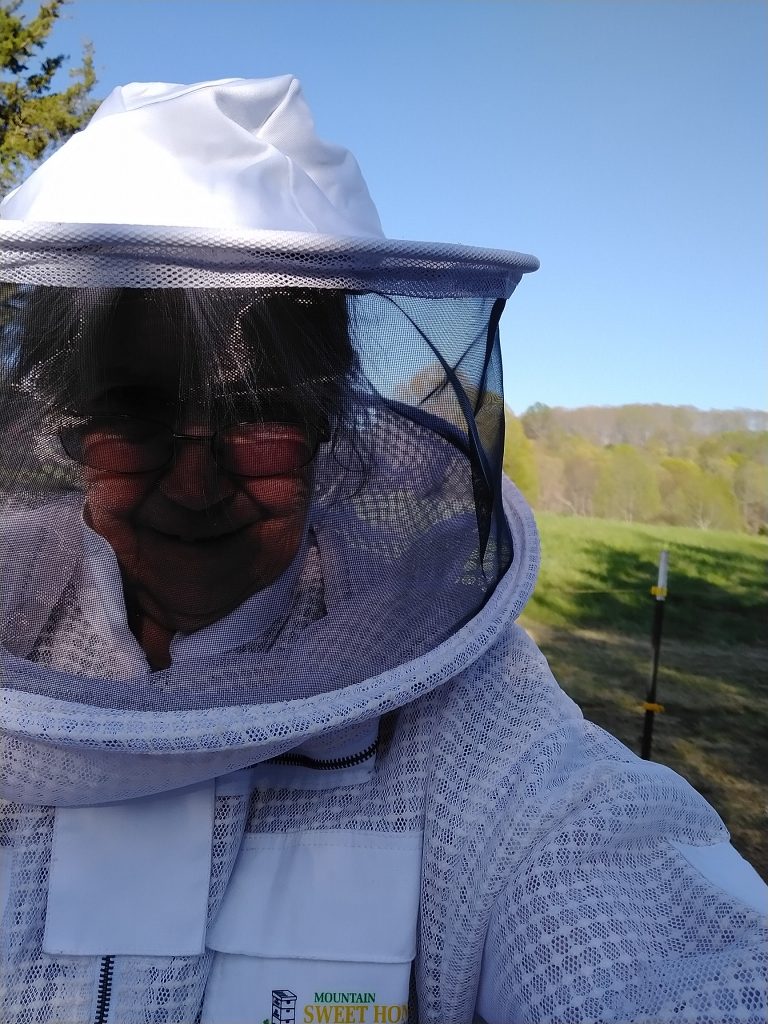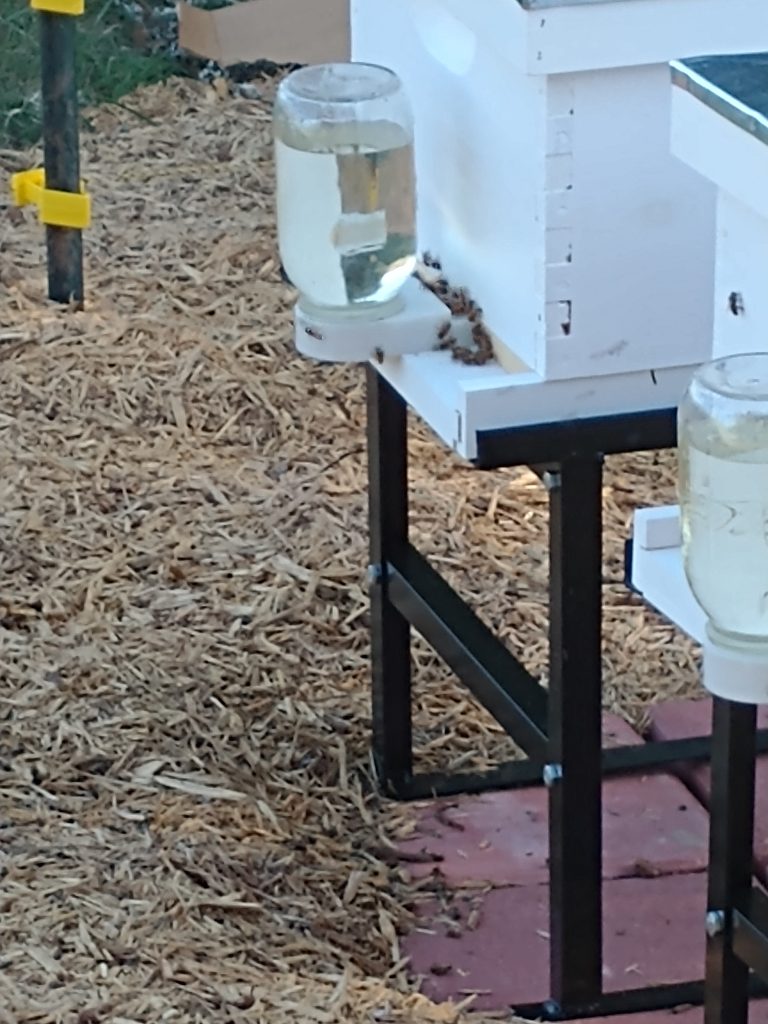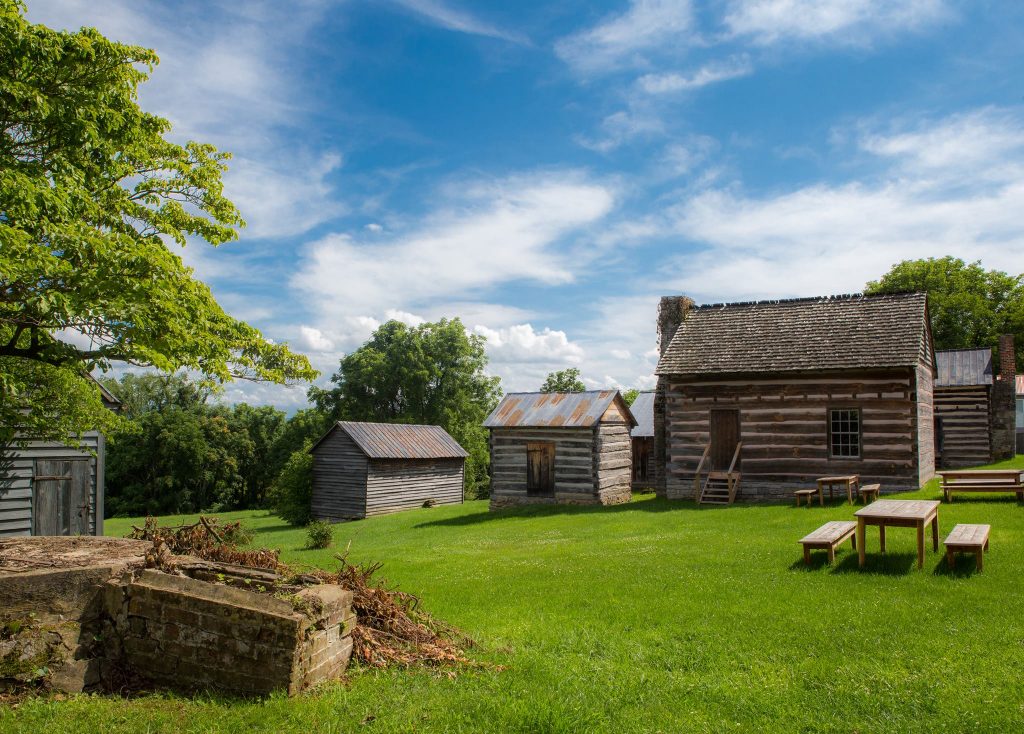The weather is glorious and we took a walk, followed by a visit with my local bee keeping friend and her husband as they did their post winter box inspections. That was delightful and a bit overwhelming as we asked questions and got answers, they offered other information, showed us around. I am glad we live where we do as their property doesn’t have a flat spot on it that they haven’t created themselves. To the point that many areas are being made into gardens so it doesn’t have to be mowed. They also don’t have a lot of open space for sunshine and they are only a few miles from us, less as the crow flies. One of my issues was how quickly the bees are emptying the feeders, and they suggested switching to quart jars instead of pints.
Once home, new batches of syrup were started and the son that got us going and is the official owner of our hives called for an update and he answered more questions. I hope my feeble brain can hold all this information. As we were talking, he walked back to check on his two hives and his feeders were empty too, so I passed on the suggestion of quarts.
Because we haven’t had rain in a few days, the hoses were moved around and the back garden was watered. And the little garden built last year over the septic clean out received a bird bath half filled with rocks so the bees can find water and not drown. To keep the chickens out of that bed as seedlings of flowers are beginning to germinate there, a section of old fencing was cut as a cover with a hole in the middle to allow the birdbath base to fit through.
After dinner, it was still bright sunny and hot, but the bee garb was donned, the quart jars of syrup loaded into a large bucket and the bees were fed. They were pretty agitated that the empty feeders were removed, but calmed back down when the larger feeders of syrup were placed in the hive openings.


What couldn’t be captured with gloves through the veil net was a picture of the cloud of bees circling the hives and me. This turned into a bee filled day and is quite an adventure. I had read that the hives could/should be different colors or decorated, so some of the remaining boxes are going to get painted and decorated before they are installed on the existing boxes. I need to get some acrylic paints and get creative.


